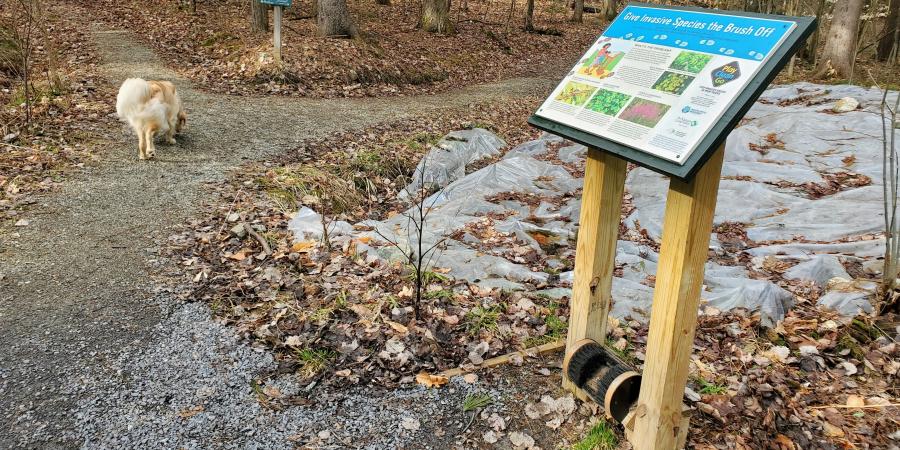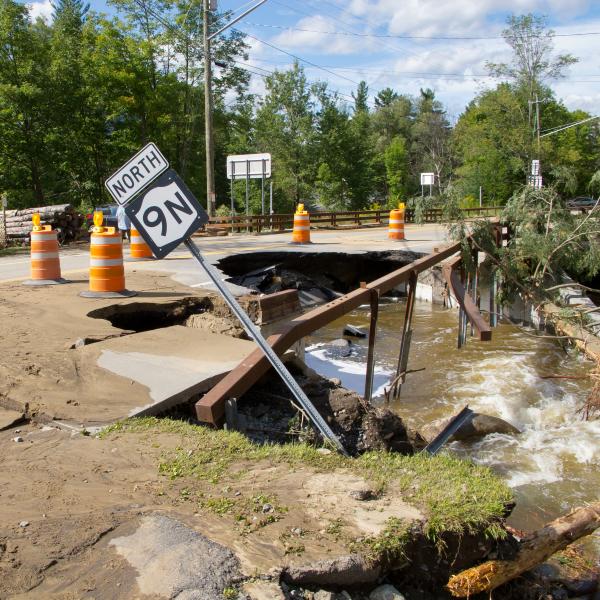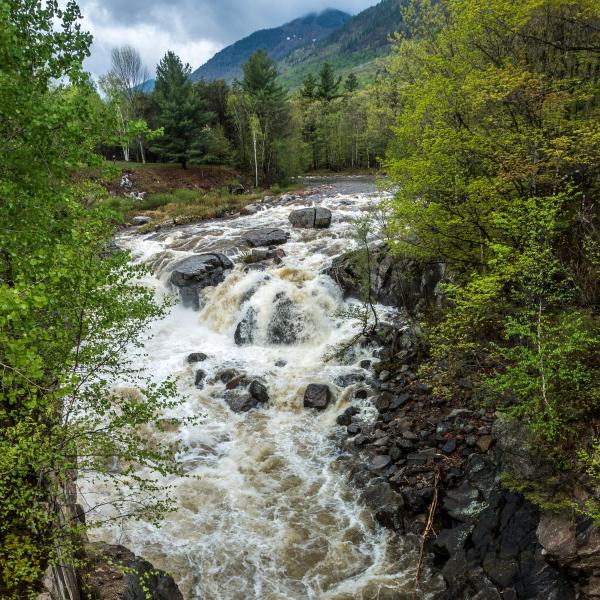Invasive species pose a threat to the Ausable River watershed and Adirondack Park as a whole. They threaten natural ecosystems, recreation, and local economies. This region is known for its beautiful landscapes and natural areas that are easily accessible by both roads and trails. Visitors come from all over the country to enjoy all the Adirondacks has to offer from peaks to ponds. Across the park, between mud season and leaf-peeping season the trailheads are full of visitors and locals alike. Increased human traffic, however, can increase pressures on these systems. Invasive species can be spread through natural pathways such as wind, currents, and animals, but this spread can be severely expedited by human pathways. Programs are in place throughout the Adirondacks that, properly and frequently used, help slow the spread of aquatic invasive species. Wader wash stations and boat inspection and decontamination stations are just two examples of options available; and state regulations limit firewood transport to help prevent terrestrial invasive species spread around campgrounds. But fewer measures are in place to prevent the spread of invasives on trails and into some of the most pristine backcountry areas via hiking boots and gear. The solution? Boot brush stations are becoming an increasingly popular way to combat terrestrial invasive species spread into these areas.
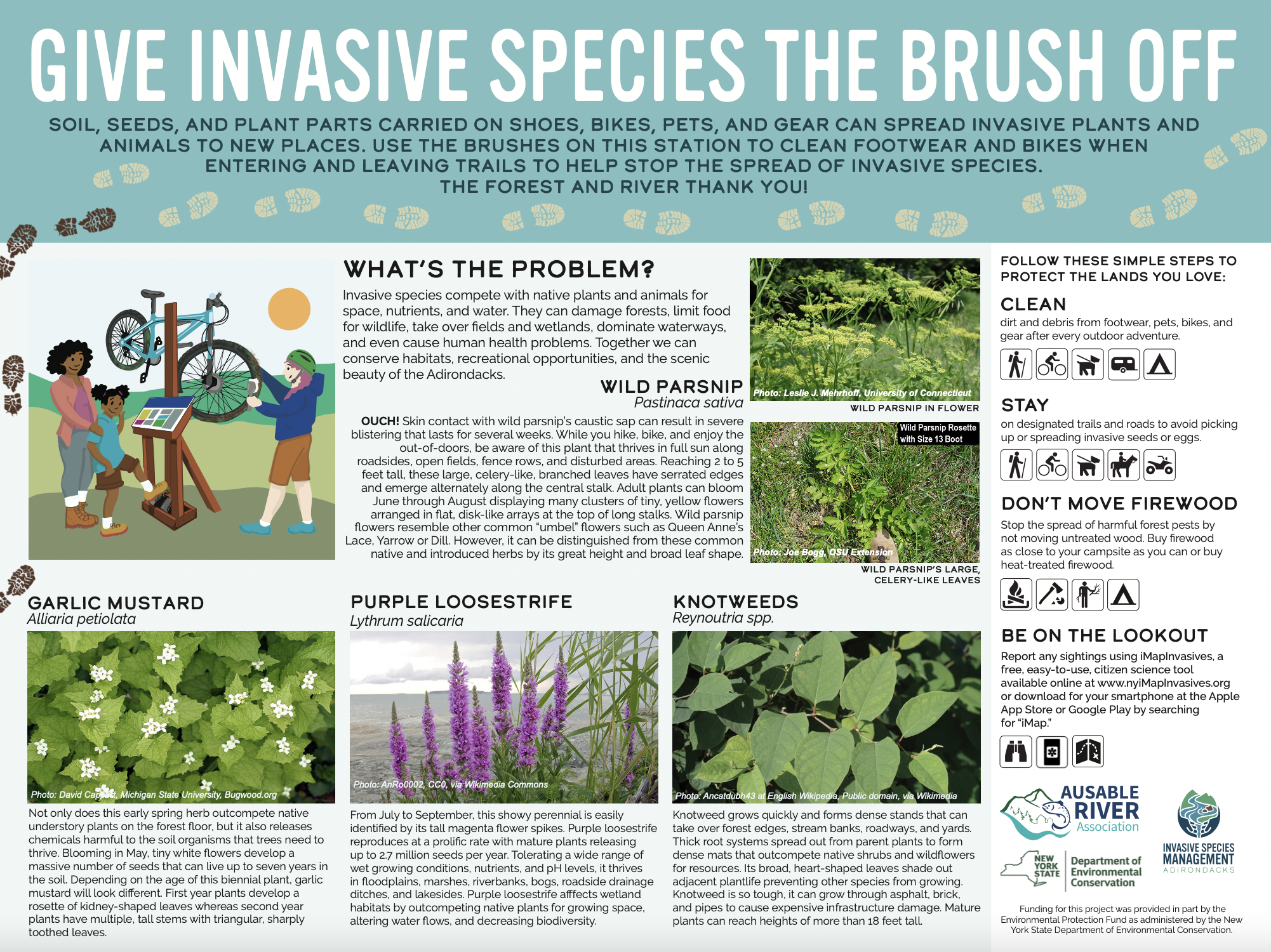
The sign for the combination boot and bike brush station to be installed at the Flume Trailhead. Like hiking boots, bike tires can collect dirt containing plant and animal parts that, when not properly cleaned, can spread invasive species onto trails.
What is a boot brush station?
Boot brush stations prevent the spread of invasive species and provide an opportunity to educate hikers. Users are encouraged to use the brush portion of the station to clean mud, dirt, and debris off their hiking boots while reading the attached sign to learn about nearby invasive species. These stations are usually installed at trailheads so hikers can clean their boots before they head out on the trail and when they return.
How do boot brush stations prevent the spread of invasive species?
Boot brush stations provide a convenient way to clean dirt and debris off boots at trailheads. While it makes sense to clean off your boots before going into a house, it may not seem as important to clean them off before going onto a dirt trail. Unlike your house, however, the dirt is not the concern here. It is what the dirt may contain. Seeds, plant parts, and even animal eggs can get caught in the mud in the treads of your hiking shoes or in the fabric sides. As the mud falls out along the next trail you head out on, you are also leaving behind that other debris that could contain parts of invasive species. By cleaning your boots, bike tires, and companion animals at the trailhead you are leaving that debris there where it can easily be managed.
Support our biodiverse habitats work for wildlife and their habitats. Give with confidence today!
Do boot brush stations really work?
The idea of cleaning the dirt off boots and gear seems like such an easy concept, but does it really help stop the spread of invasive species? While we can’t prove that a boot brush station prevented the spread of an invasive species on a trail or that a species was spread via hiking boots rather than by wind or birds, we can look at the seeds collected at the boot brush stations over a season. A research project in Illinois examined the mound of dirt that collected under the boot brush station and identified the seeds that were found. In this study, 39 different species were found in that mound of dirt and 14 species were exotic or non-native species including two of the target invasive species in that area. They also collected dirt from the trail and identified species found there. The seed community found at the boot brush station was very different from that found along the actual trail. While this isn’t hard proof that boot brush stations can completely stop the spread of invasive species, it does indicate that the stations are removing seeds from people’s boots.
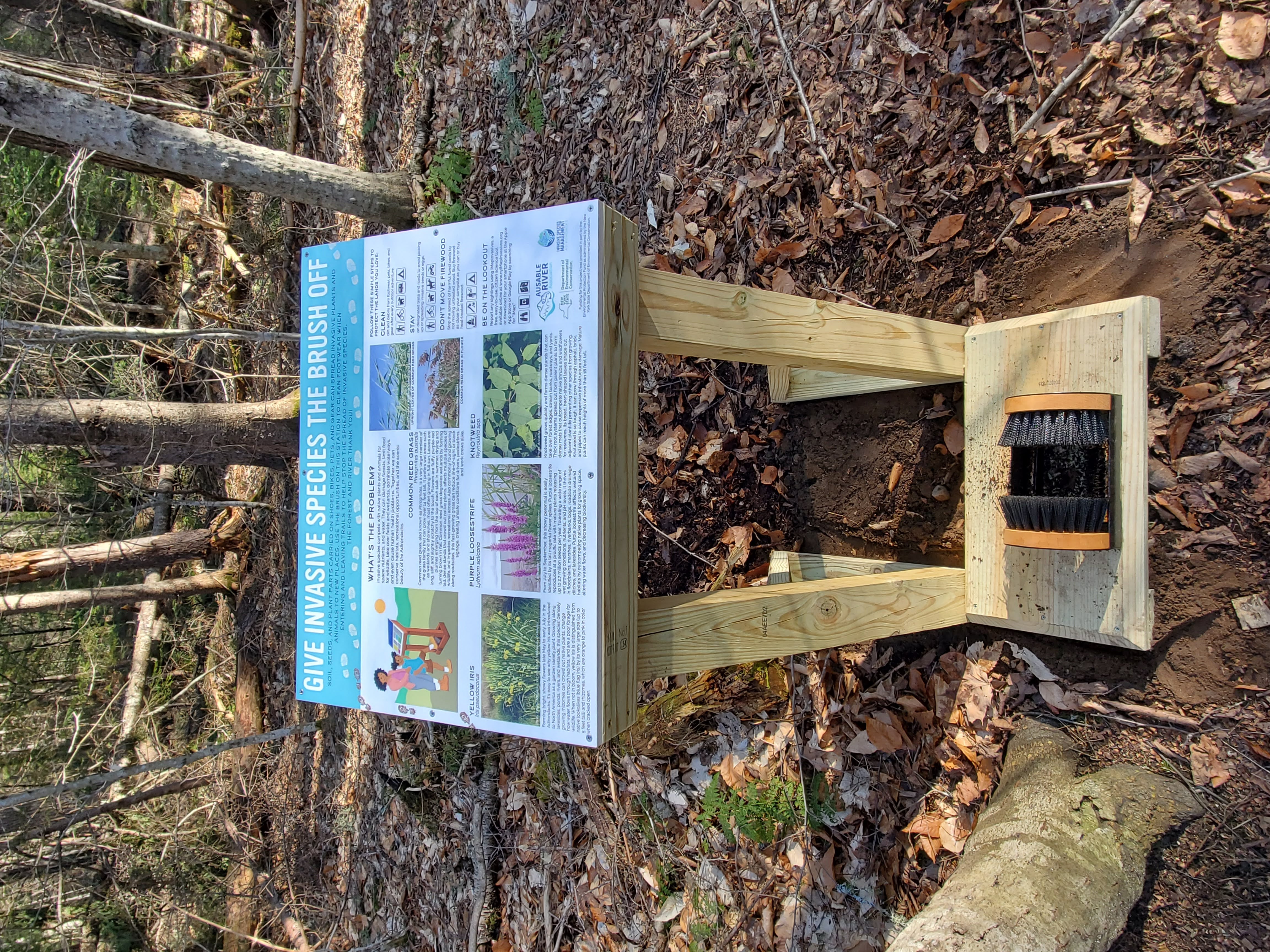
The boot brush station at the Connery Pond trailhead.
Where can I find a boot brush station?
The Ausable River Association, in partnership with the NYS Department of Environmental Conservation, Adirondack Park Invasive Plant Program, and Adirondack 46ers, has installed four boot brush stations in the Ausable River watershed. These stations are located at the Connery Pond, Flume, Round Pond/Dix Mountain, and Roostercomb trailheads. The station at the Flume trailhead is a combination boot and bike brush station. These are the first stations on public land in the region. Other boot brush stations installed by partner organizations can be found at the Silver Lake Bog, Boquet River and Coon Mountain Nature Preserves as well as the Adirondack Loj. We hope to continue expanding this network across the watershed and beyond.
What else can I do to help stop the spread of invasive species?
There are many ways that people unintentionally spread terrestrial invasive species, but there are a few easy things to keep in mind to prevent it. Don’t move firewood, shop at local nurseries and green houses, and plant native species in your garden. Remember to keep an eye out for a boot brush station on your next hike and give invasive species the brush off.
Story by Liz Metzger, Research Associate.
Sign-up for our e-newsletter to get weekly updates on the latest stories from the Ausable River Association.
